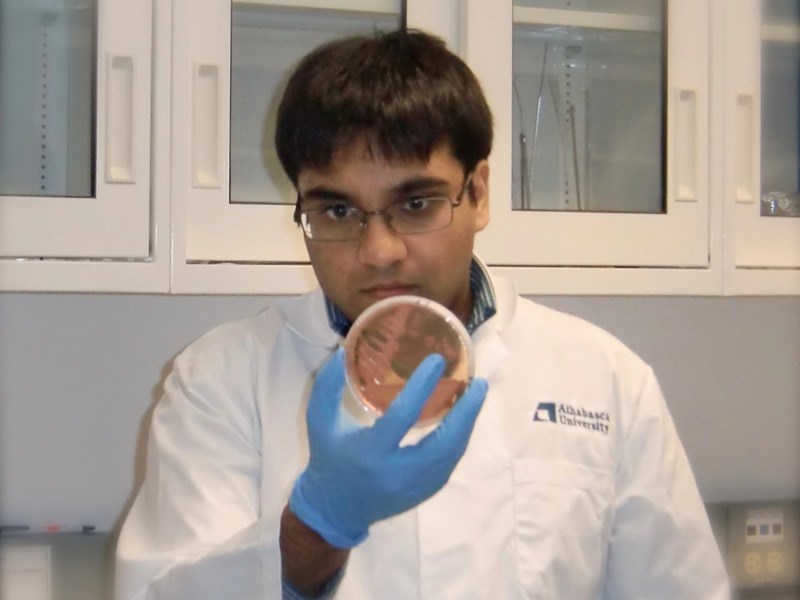Bacterial infections account for 80 per cent of infections in the general population; Dr. Shauna Reckseidler-Zenteno, associate professor of biology at Athabasca University (AU), and bachelor of science project student Neel Doshi are looking to change that.
The pair will be at AU on May 9 from noon to 1 p.m. to talk about their research in the field of microbiology in the latest installment from Science Outreach-Athabasca.
The pair’s research is concerned with two major bacteria that cause the majority of infections to those admitted to hospitals. In particular, these bacteria cause skin and lung infections like pneumonia. These bacteria grow in groups called biofilms on different surfaces.
“It’s certainly new in the field of microbiology to think about bacteria as a community,” Doshi explained. “One would think of a city instead of one individual person.
“We have a community that’s going to be a lot stronger than a single bacteria floating around,” he said.
According to Reckseidler-Zenteno, these bacteria work together and sometimes share genetic information, making them particularly hard to treat.
“When they’re growing in this slime layer, they’re very protected … it makes them very antibiotic resistant, almost 1,000 times more than if a bacteria were growing on its own,” she said.
“This is a problem because if you get any kind of an infection … and you have this kind of bacterial community infecting you instead of a single bacteria, it’s going to be a lot harder to get rid of, and treat,” Doshi said.
The weapons to combat these biofilms are called synthetic peptides. Peptides naturally occur in our immune systems; however, they can also be manufactured in a lab. Partnering with the University of British Columbia (UBC), the pair has had access to a vast peptide library, and they have been able to test nearly 200 of them.
By injecting these peptides into biofilms grown in the lab, the pair is able to observe the effects different peptides have on the bacteria.
“We’re basically going through and screening to see which peptides work,” Reckseidler-Zenteno said.
“We’ve seen that some peptides are very, very effective at clearing this kind of bacterial community; it effectively eliminates it,” Doshi said.
Reckseidler-Zenteno explained they have five or six good candidates for further testing, which could eventually be worked into some kind of treatment in humans. She explained they now know that those peptides work; the next thing to figure out is how they work.
This Friday’s talk will run in Governing Council Chambers at AU. Admission is free.


